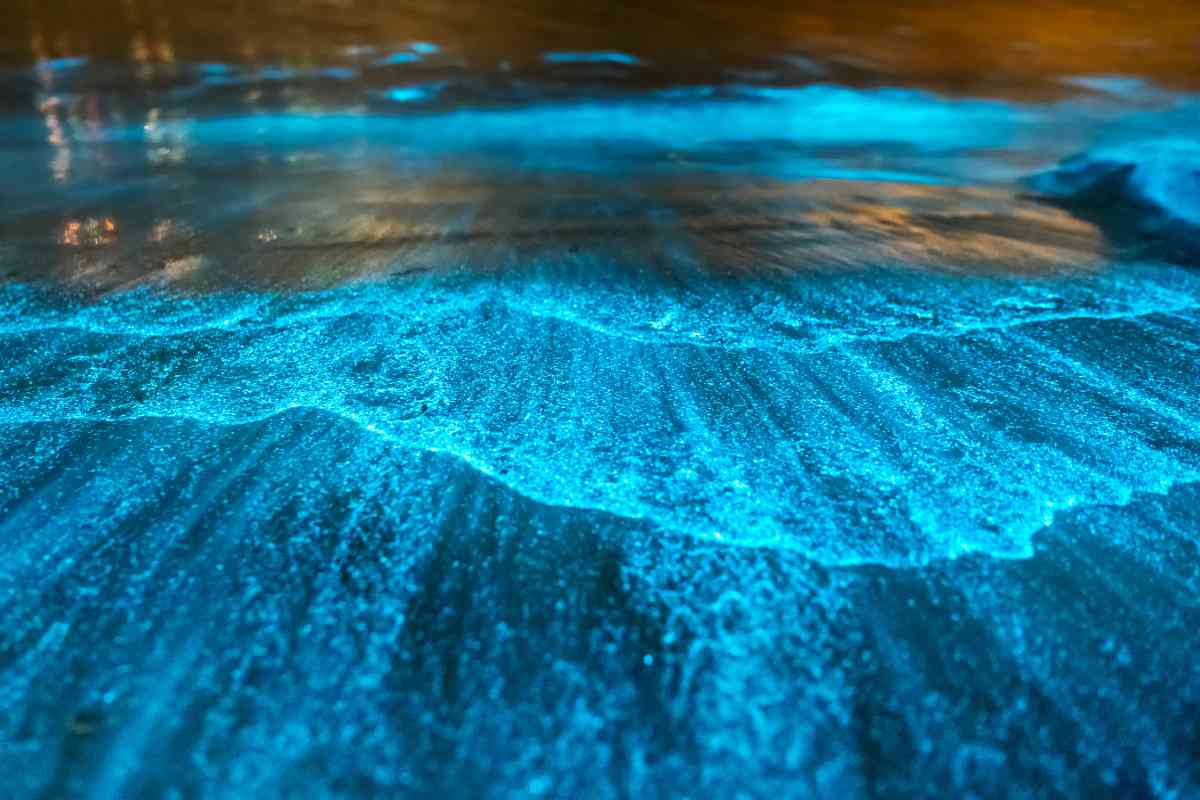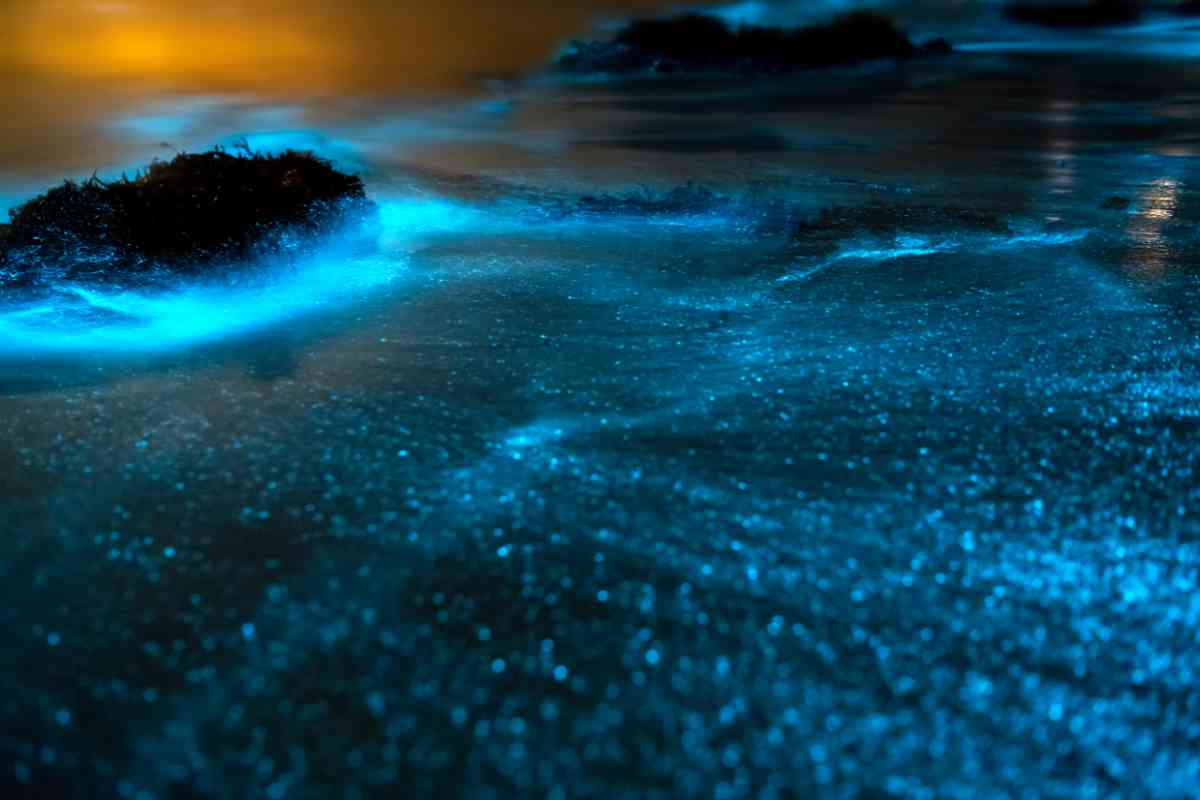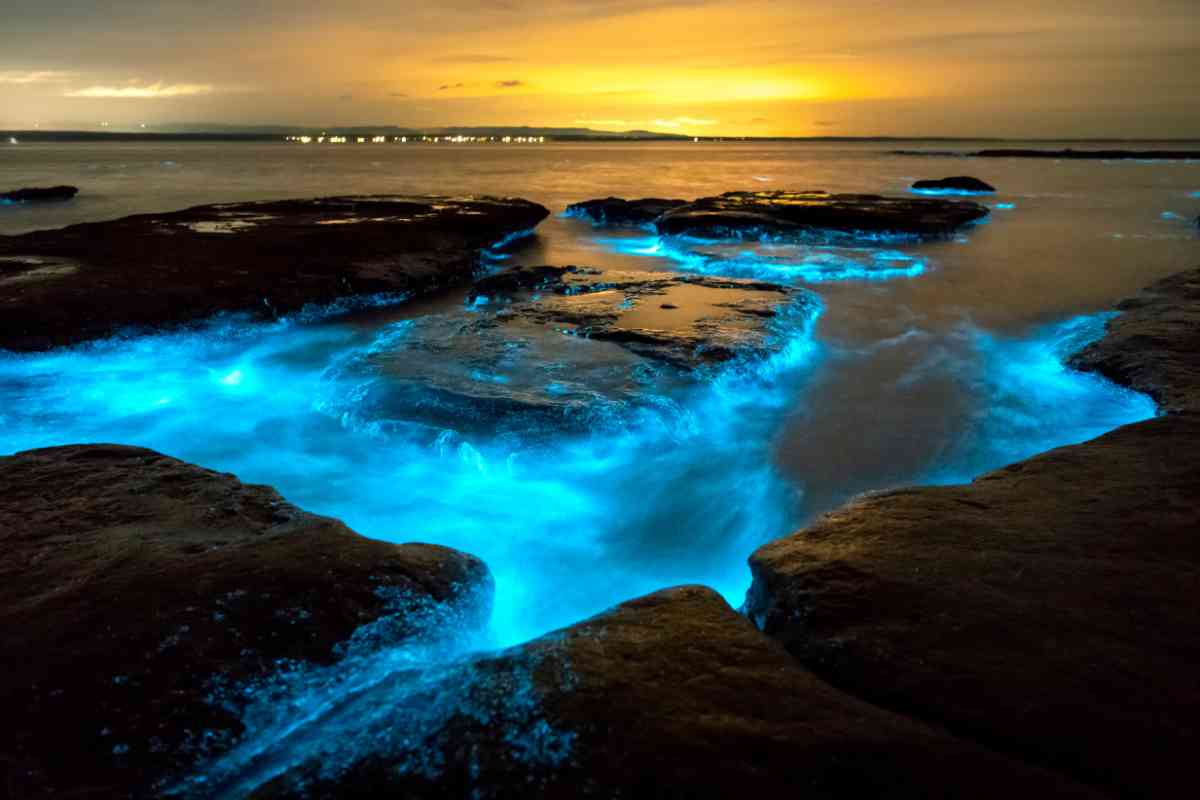The Best Bioluminescent Bays In Puerto Rico & When To Go
Puerto Rico has some of the most magnificent bioluminescent bays in the world. In this article, we will explore the bioluminescent bays in Puerto Rico and the best time to go.

When is the best time to visit the bioluminescent bays in Puerto Rico?
The best time to go to the bioluminescent bays in Puerto Rico is during the dry season, which falls between December and April. During this time, the water is crystal clear. Also, make sure your trip falls within the new moon when the sky is darkest to enjoy the best views.
Puerto Rico is famous for its pristine beaches surrounded by turquoise blue waters, delightful cuisines, historic colonial towns, marine diversity, and lush tropical forests, just to name a few.
However, this country is also home to the most beautiful bioluminescent bays in the world. In fact, there are only three countries with bioluminescent bays, with Jamaica and Vietnam being the other ones.
And, if you want to truly experience this magic and beauty yourself, then a visit to one of the bioluminescent bays in Puerto Rico should be on your bucket list. But, when is the best time to go to the bioluminescent bays in Puerto Rico?
We have the answers. In this guide, we will take you through everything you should know about this magical feature.
We will take a closer look at what bioluminescent bays are and the best time to visit Puerto Rico’s bioluminescent. We will also share tips for visiting Puerto Rico’s bioluminescent bays. With that said, let’s dive in.

Bioluminescent bays are characterized by a neon-blue or blue-green color. And, this glow may appear as if it’s coming from underwater lights. However, this is not the case.
The blue glow that you will see in these bays is a biological phenomenon caused by microorganisms called dinoflagellates.
These microorganisms will emit light when disturbed by any movement in the water. According to scientists, this glow is designed to either confuse the prey or attract a bigger organism higher up the food chain to eat the prey.
In short, it’s more of a defense mechanism.
You can find these light emitters in several water bodies. But, you can only experience majestic sights if they are present in high concentrations, which is usually the case with bioluminescent bays.
We should also point out that the conditions must be perfect for these light emitters to be present in high concentrations.
Today, there are only five places on earth where you can experience this phenomenon. And, Puerto Rico happens to have three of these five bays where you can see the water glowing with blue-green light at night.
These are Mosquito Bay, La Parguera, and Laguna Grande.
So, which of these bays should you visit? Well, each has its uniqueness. And if possible, you should visit all of them.
But, this will depend on your itinerary, the time you have and where you are staying. Let’s take a closer look at each of these bays.
What are the best places to see bioluminescent algae in Puerto Rico?
Mosquito Bay
Mosquito Bay is situated on Vieques Island, which is approximately 40 minutes from Ceiba via a ferry ride.
It will also take you a few minutes to reach here if you are flying in from San Juan. This bay is renowned for its crystalline waters, picture-perfect beaches and several boutique hotels.
Mosquito Bay is considered the brightest bioluminescent bay in the world. And, there are two contributing factors. First, It has one of the largest concentrations of light-emitting dinoflagellates.
Secondly, there’s minimal water and light pollution in this area, making the light the dinoflagellates are emitting stand out even better.
We should point out that Mosquito Bay falls within the Sun Bay Nature Reserve. Therefore, swimming is not allowed. However, you will still have a spectacular experience if you go on a glass-bottom boat trip or canoe.
Laguna Grande
Laguna Grande is located on the country’s east coast around an hour from San Juan. It’s the second brightest bay among the three in the country. It also happens to the most accessible.
What sets it apart from the others is that it’s a lagoon itself and the bioluminescent bay itself is perched within an area of stunning beauty.
While seeing the glow from a closer range is the main draw, the journey to the location is equally charming.
To reach the lagoon, you will be taken on a kayak trip through mangrove forests.
Furthermore, this lagoon is within the Las Cabezas de Suan Juan Nature Reserve – considered one of the most picturesque areas in the country.
La Parguera

La Parguera is a charming, fishing village, located approximately 78 miles to the southwest of San Juan. It’s surrounded by mangrove forests and calm, crystalline Caribbean waters.
It’s the only bioluminescent bay where you can swim, meaning you will have a close-up of this beautiful glow.
However, the glow here is not as bright as in Mosquito Bay, due to overdevelopment and pollution.
But, it’s much easier and cheaper to get here, compared to the other bioluminescent bays in Puerto Rico. Also, a guided tour to see the glow is cheap. And most importantly, you will still enjoy a rewarding experience.
The Best Time to Visit Puerto Rico’s Bioluminescent Bays

So, when is the best time to visit the bio bays in Puerto Rico? Well, you can visit any time of the year and still manage to catch the glows.
However, it’s highly advisable to go during the dry season, which usually runs from December to April.
The water will be murky or cloudy during the wet, rainy season, meaning you won’t catch the best glow. With that in mind, you should plan your trip around the country’s dry season.
However, most people looking to see the glow will also visit Puerto Rico during the dry season, meaning the bays may be crowded.
Also, your flight and accommodation will cost higher during the peak season.
To this end, you should avoid the busiest time, which is usually mid-March. The best time to visit is therefore February and April.
The best time of the month to visit the bio bays is during the new moon. During this time, the sky will be darker.
So, the glow will be more prominent. If the moon is too bright, then its light will dim the illumination of the dinoflagellates.
Key Takeaways
- Bioluminescent bays feature neon-blue or blue-green glow
- Puerto Rico has three of the five bioluminescent bays in the world
- Mosquito Bay offers the best views while Laguna Grande is the easiest to reach
- You should visit the bioluminescent bays during the dry months
